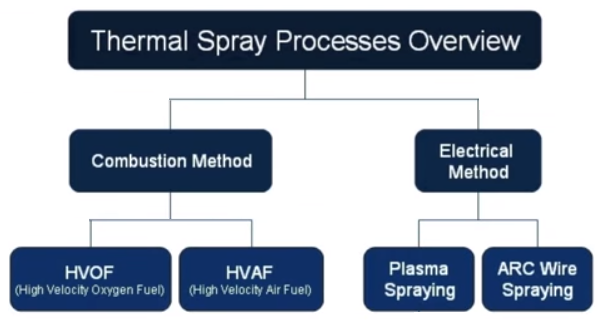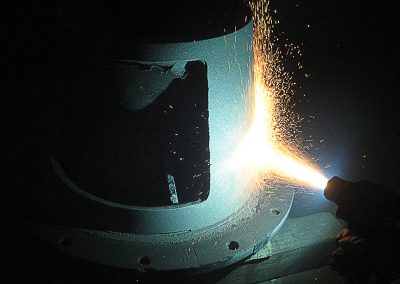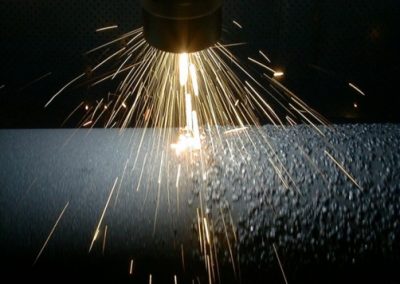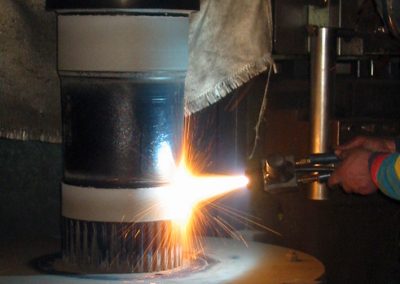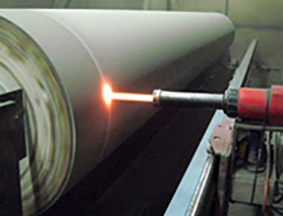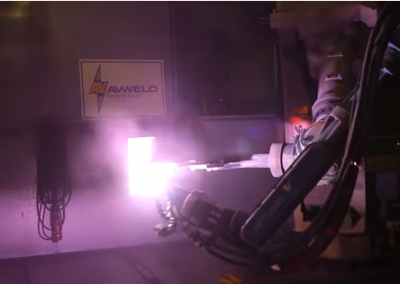Thermal Spray
Recently upgraded robotic cladding & hardfacing capacity comprising 2 x 40kg 2.7m reach ABB 6-axis robots together on a 10m long track working with 2 x 2-axis 5 tonne robotic positioners.
Thermal spraying techniques are coating processes in which melted (or heated) materials are sprayed onto a surface. The coating precursor is heated by electrical (plasma or arc) or chemical means (combustion flame).

Thermal spraying can provide thick coatings (approx. thickness range is 20 microns to several mm, depending on the process and coating), over a large area at high deposition rate as compared to other coating processes such as:
Electroplating, Physical and Chemical Vapor Deposition
Coating materials available for thermal spraying include metals, alloys, ceramics, plastics and composites. They are fed in powder or wire form, heated to a molten or semi molten state and accelerated towards substrates in the form of micrometer-size particles. Combustion or electrical arc discharge is usually used as the source of energy for thermal spraying. Resulting coatings are made by the accumulation of numerous sprayed particles. The surface may not heat up significantly, allowing the coating of flammable substances.
Coating quality is usually assessed by measuring its porosity, oxide content, macro and micro-hardness, bond strength and surface roughness. Generally, the coating quality increases with increasing particle velocities.
Avweld provide the following variations of thermal spraying:
-
-
-
Plasma Spraying
-
Arc Spraying
-
High Velocity Oxygen Fuel (HVOF)
-
High Velocity Air Fuel (HVAF)
-
-
